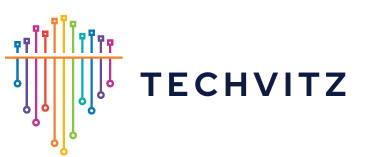In the realm of construction, accuracy and efficiency are paramount. The success of any construction project hinges on meticulous planning and precise estimation. To ensure seamless execution and optimal resource utilization, construction estimating best practices are indispensable. Here, we present seven best practices that every construction professional should adhere to:
1. Utilize Advanced Estimating Software
In the modern construction landscape, reliance on manual estimation processes is outdated and inefficient. Embracing cutting-edge estimating software empowers construction professionals to streamline their workflows, enhance accuracy, and expedite the estimation process. Advanced software solutions offer features such as cost databases, 3D modeling, and real-time collaboration, enabling teams to generate comprehensive estimates with unprecedented speed and precision.
2. Implement Historical Data Analysis
Drawing insights from past projects is invaluable in construction estimation. By meticulously analyzing historical data, construction professionals can identify patterns, trends, and potential cost drivers. Leveraging this information allows for more accurate forecasting and budget allocation, mitigating the risk of unforeseen expenses and project delays.
3. Foster Collaborative Communication
Effective communication is the cornerstone of successful construction projects. Establishing open channels of communication between project stakeholders, including architects, engineers, contractors, and subcontractors, fosters synergy and alignment throughout the estimation process. Regular meetings, status updates, and clarification sessions ensure that all parties are aligned with project objectives and requirements, minimizing misunderstandings and discrepancies.
4. Conduct Site Visits and Assessments
Thorough site visits and assessments are essential precursors to accurate construction estimation. By physically inspecting the project site, construction professionals can gain firsthand insights into site conditions, logistical constraints, and potential challenges. This firsthand knowledge enables more informed decision-making and enables the development of precise estimates tailored to the project’s unique characteristics.
5. Embrace Parametric Estimating Techniques
Parametric estimating techniques leverage historical data and statistical models to generate estimates based on project parameters such as size, complexity, and location. By quantifying these variables and extrapolating cost data from similar past projects, construction professionals can produce estimates with a high degree of accuracy and reliability. Parametric estimating empowers teams to quickly assess project feasibility and allocate resources effectively, optimizing project outcomes.
6. Incorporate Contingency Planning
Construction projects are inherently prone to uncertainties and unforeseen challenges. Incorporating contingency planning into the estimation process is essential to mitigate risks and safeguard project success. By allocating a contingency reserve for unforeseen expenses and potential scope changes, construction professionals can proactively address challenges as they arise without jeopardizing project timelines or budgets.
7. Continuously Refine and Iterate
The construction industry is dynamic, characterized by evolving technologies, methodologies, and best practices. To stay ahead of the curve, construction professionals must embrace a culture of continuous improvement. By analyzing project outcomes, soliciting feedback from stakeholders, and staying abreast of industry trends, teams can identify areas for enhancement and refine their estimating processes iteratively.
In conclusion, adhering to these construction estimating best practices is essential for optimizing project outcomes, mitigating risks, and ensuring client satisfaction. By leveraging advanced estimating software, harnessing historical data insights, fostering collaborative communication, conducting thorough site assessments, embracing parametric techniques, incorporating contingency planning, and prioritizing continuous improvement, construction professionals can elevate their estimating capabilities and drive success in the competitive construction landscape.



